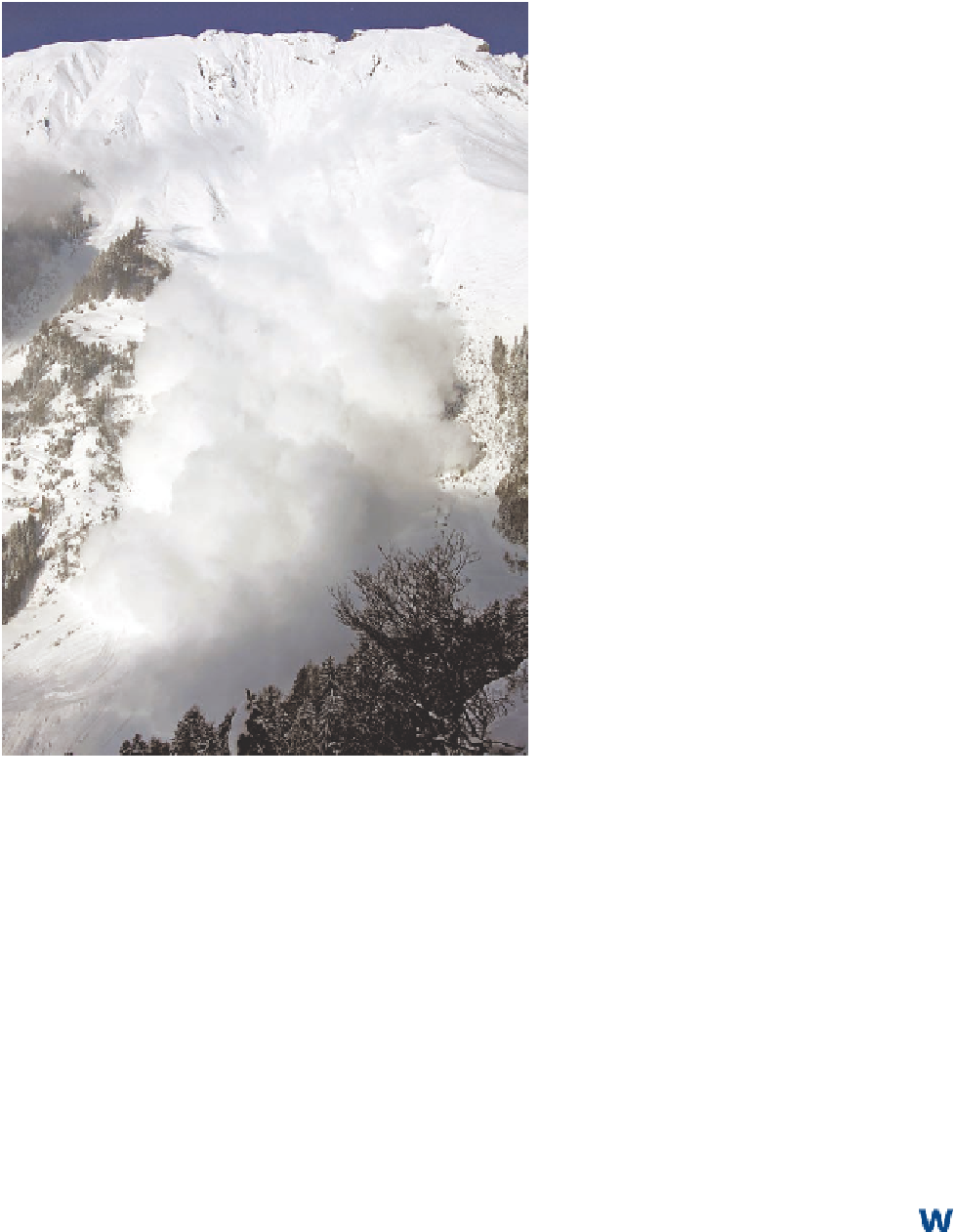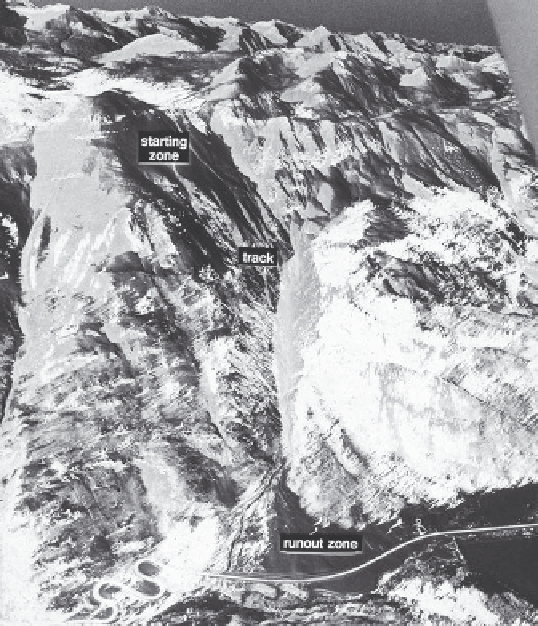Geoscience Reference
In-Depth Information
(b)
Figure 14.24 Avalanches.
(a) Avalanches are usually associ-
ated with the sudden failure of enormous quantities of snow that
cascade down steep mountain slopes. (b) Avalanches begin at
the starting zone, travel down the track, and end at the runout.
(a)
Avalanches have three major components (Figure 14.24b).
They begin in a place appropriately called the
starting zone
,
which is usually located on the steepest slopes of a mountain
where deep snows lie at precarious angles. After the avalanche
begins, it typically follows a chute or ravine system on the moun-
tain slope called a
track
. The track is where most destruction
takes place, either through trees being knocked down or through
the movement of boulders and other debris. As you travel through
the mountains in summer, you can often see the track of a re-
cent avalanche by looking for avalanche scars, which are treeless
zones extending down the slope of a mountain. Ultimately, an
avalanche loses its energy when it reaches the base of the moun-
tain and the slope lessens. This area is called the
runout
and is the
place where snow and debris are deposited.
Although most avalanches happen in remote places that have
no impact on people, they can be a worrisome natural hazard at
ski resorts and even along mountain highways. In 2009, for ex-
ample, more than 25 skiers died (and many more were injured)
around the world after being swept away in avalanches. Avalanche
hazards were a particular problem in the Rocky Mountains and
Pacific Northwest, but also caused fatalities in the European Alps
and Southern Alps in New Zealand. People who live and work in
mountainous areas are keenly aware that some areas are particu-
larly prone to avalanches. In an effort to control the hazard, ava-
lanches are often purposely started when conditions appear ripe.
To minimize the risk, explosives are dropped from helicopters onto
the unstable snow pack. The resulting explosion causes an ava-
lanche to develop under somewhat controlled conditions.
Weathering and Mass Movements
To better understand the process of mass movements, go to the
Geo Media Library
and access
Weathering and Mass Move-
ments
. This animation allows you to visualize the various mass-
wasting processes in action. As you work through this exercise,
observe how these processes operate, how they differ from each
other, and how they shape the landscape. In addition, the anima-
tion will give you a better comprehension of the impact these
hazards have on people and the structures in which they work
and live. Once you complete the exercise, be sure to answer the
questions at the end to test your understanding of this concept.




















